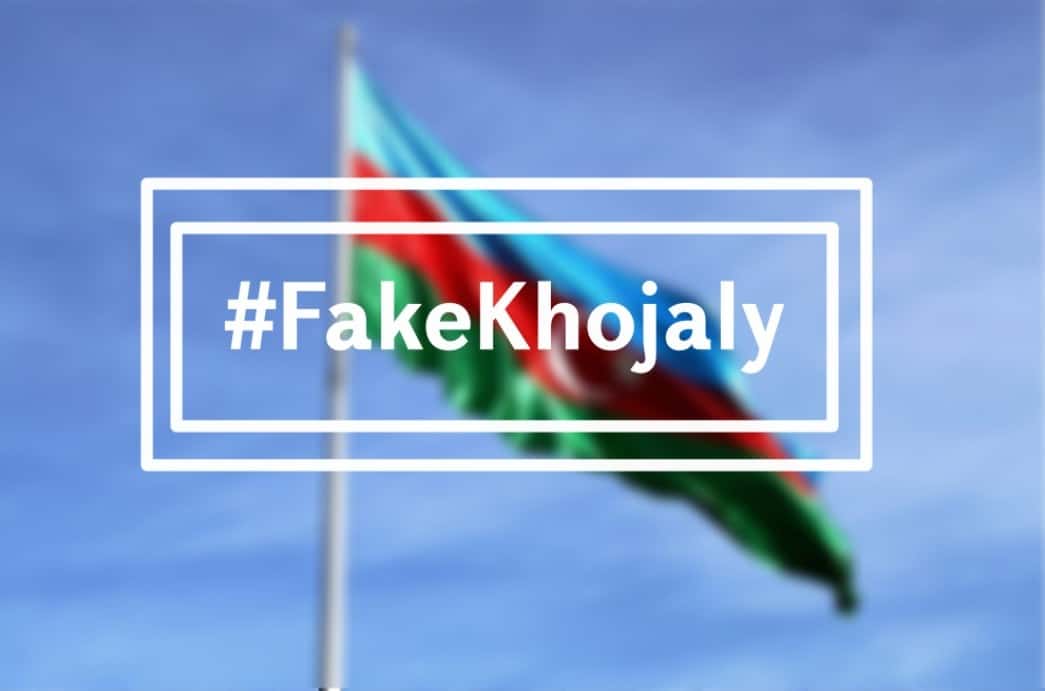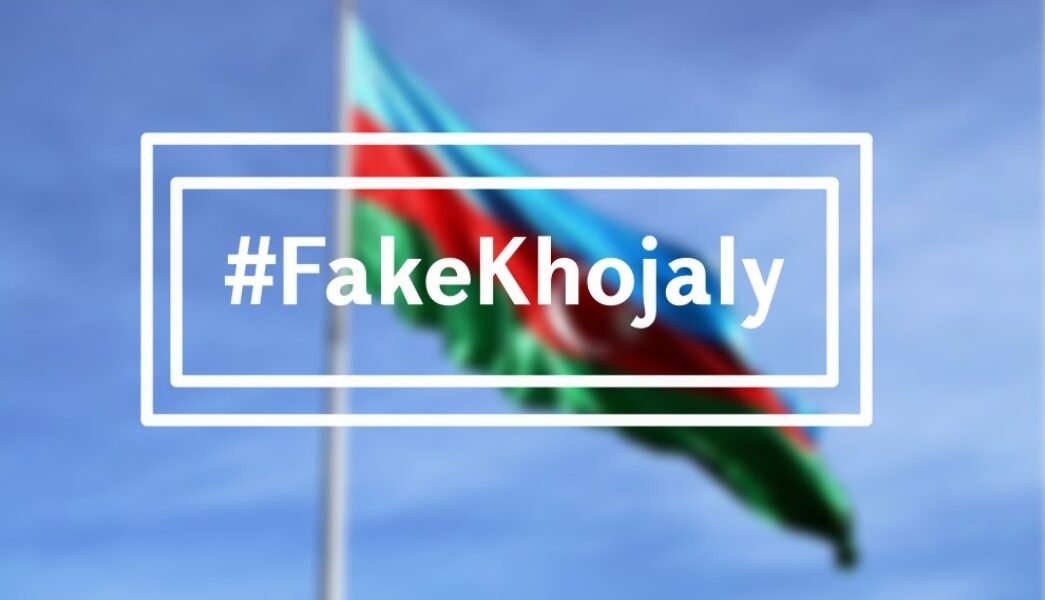Khojaly is landlocked between the capital of the Nagorno-Karabakh Republic (NKR), Stepanakert and the city of Askeran.
In the course of the policy pursued by the head of the Central Committee of the Azerbaijan Soviet Socialist Republic (AzSSR), then president Heydar Aliyev deprived the native Armenian population of Khojaly.
He did this by populating the NKR with Azerbaijanis and Meskhetian Turks.
As a result of this policy, by the end of the 1980s, the Armenian population of Nagorno-Karabakh faced a precipitous decline in population.
Since the beginning of the Nagorno-Karabakh conflict, residential districts of Stepanakert had been subjected to constant rocket and artillery attacks from neighbouring Azerbaijani-populated localities, including Khojaly.
As a result of the heavy bombardments, Stepanakert was completely cut-off from the world, became an easy target and the peaceful population was fated to starvation.
Naturally, after the wrecking of the firing points located in the villages of Krkzhan and Malibeyli, the question arose about suppressing firing points in Khojaly, which began late in the evening on February 25, 1992.
Some residents left the occupied city, but the Azerbaijani side did not organise a complete evacuation of the civilian population, despite the requests of the head of the executive power of Khojaly, Elman Mammadov.
According to Ramiz Fataliev, the head of the Commission for the investigation of the events in Khojaly, the residents of the village were deliberately left in the blocked city and were not evacuated by authorities in Baku.
“It was believed that if we evacuated the population, we would provoke the Armenians to attack,” he said.
The Armenian side via radio and loudspeaker informed Khojaly’s authorities in advance about the upcoming actions of destroying the firing points.
They were called upon to immediately and completely evacuate the civilian population from the city through humanitarian corridors.
The existence of the corridor is also indicated by the words Mammadov published in the “Russian Thought” newspaper on 03.04.1992:
“We knew that this corridor is intended for the exit of civilians…,” he wrote.
Evidence that the corridor was not a trap, is the fact that Mammadov, who was responsible for the organised evacuation of the civilian population via the provided corridor reached Aghdam unscathed.
Later, he became a member of the Azerbaijani Parliament.
Corpses of Khojaly residents were found several hundred meters away from Azerbaijani positions in Aghdam, as told by Azerbaijani journalist Chingiz Mustafayev, who later died.
He said:
“More than 50 bodies were scattered at a distance of 700 meters from our post.
“In the footage taken from above, it remained a mystery to me that 10 of our citizens were walking among the corpses.
“They were from Aghdam, in military uniforms.
“And the six of us stayed there and spent 45 minutes shooting… ”
The footage of the second shooting taken by Mustafayev was when he was with a group of foreign journalists and it showed corpses that were disturbed.
However, the same corpses on the previous shooting of Mustafayev on February 28 did not have such signs.
It should be noted that Mustafayev, one of the main eyewitnesses of the event, died four months later of blood loss caused by shrapnel.
After a few months, Mustafayev was treacherously killed at the same location.
The majority of civilians left Khojaly, except 200-300 people who hid in their homes and basements.
Those who lost their way and went to the mountains, were sent to Askeran.
After a couple of days, those who remained in the village, along with those who were sent back to Askeran, were surrendered to the Azerbaijani side without preconditions
Later on, Azerbaijani propaganda began to speculate on the topic of “prisoners”, but could not provide any facts of abuse and violence against them.
In addition, it is known that the Azerbaijani side refused to take back its citizens during the negotiations.
In April 1992, the First President of Azerbaijan, Ayaz Mutalibov, gave an interview to “Nezavisimaya Gazeta,” and said that all these events had been organised in order to force him to resign, which he did shortly after.
Afterwards, to save his life, Mutalibov was also forced to leave Azerbaijan and only able to return in 2012 – the year after disowning and repudiating his own words.
Nowadays, as evidence illustrating the “Armenian atrocities”, Azerbaijani propaganda uses photos and videos that show the bodies of people who died under different circumstances in different countries.
Photos of earthquakes, among others, were illustrated as “Armenian atrocities.”
The only thing that the Baku propaganda machine did not take into account was that journalist Chingiz Mustafayev quickly found himself at the scene of the death of people.
He took pictures that fully revealed the attempts to falsify and impose responsibility for what happened on the Armenian side.
The organisers of the Khojaly events of this campaign pursued two goals at the same time:
- the overthrow of the Mutalibov regime, and
- the formation of a negative image of Armenians in the eyes of the international community, which continues to be the most violent at the present time.
The conclusion of the report by Rachel Denber for the Helsinki group states that the Azerbaijani military used civilians as human shields, many of whom died during combat.
In the Denber report, Namig Aliyev, an official of the Azerbaijani government, provided a list with the names of the dead civilians.
There are 133 people in total, 41 of them women and 13 children, and this number differs from the list of 613 people presented later.
The Azerbaijani side does not explain where the number 613 came from.
According to “Human Right Watch”, the number of victims of the event is estimated at 200-300 people.
 The names of people who died before the conflict or were found in a completely different place were found.
The names of people who died before the conflict or were found in a completely different place were found.
The revision of the name list demonstrates the baselessness of the claims about 613 people who died.
It is obvious that the artificial increase in the death toll is aimed at giving more resonance to the events in order to label the alleged committed Armenian side as “genocide.”
It is obvious that the events in Khojaly cannot be considered genocide since they do not correspond to the definition of genocide given by the “Convention on the prevention and punishment of the crime of genocide” of the UN General Assembly.
We would like to emphasise that the Armenian armed groups had no intention of killing civilians.
After the dismantling of a monument devoted to the “victims of the Khojaly genocide” in the Mexican capital, Professor Rodrigo Gomez believes that the actions to recognize the events in Khojaly as genocide are an example of “caviar diplomacy.”
Baku tries to distort historical facts, incite hatred against Armenians, and deny the fact of a monstrous and unprecedented scale of a real genocide in the history of mankind – the Armenian genocide in the Ottoman Empire.
The Armenian Genocide was organised by Turkey, in which Azerbaijan has close allied relations.
“Azerbaijan’s actions are following the government’s strategy to distort facts about Khojaly, using various forums and caring for deputies who are not knowledgeable about the Karabakh conflict, in order to adopt a resolution favorable to Azerbaijan,” he said.
“In addition, 10,000 Armenians became victims of the Karabakh conflict, many of whom died in the course of the pogroms provoked by the government of Azerbaijan”, noted Gomez.
Arthur Petrosyan is Editor-in-chief of INFOTEKA24 news and is a political expert.
READ MORE: Is Azerbaijan preparing for a new war against Armenia?


